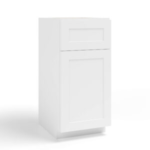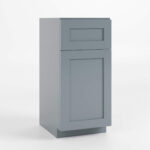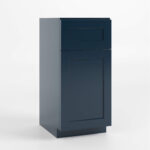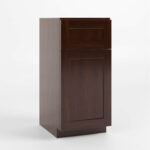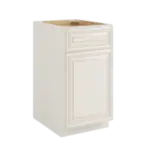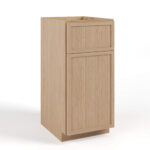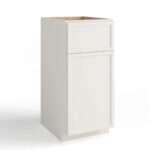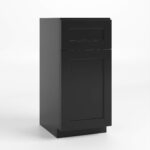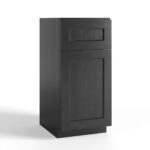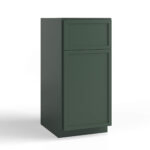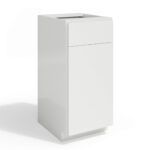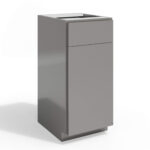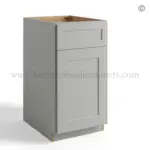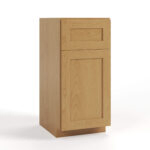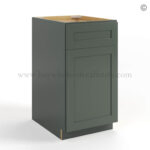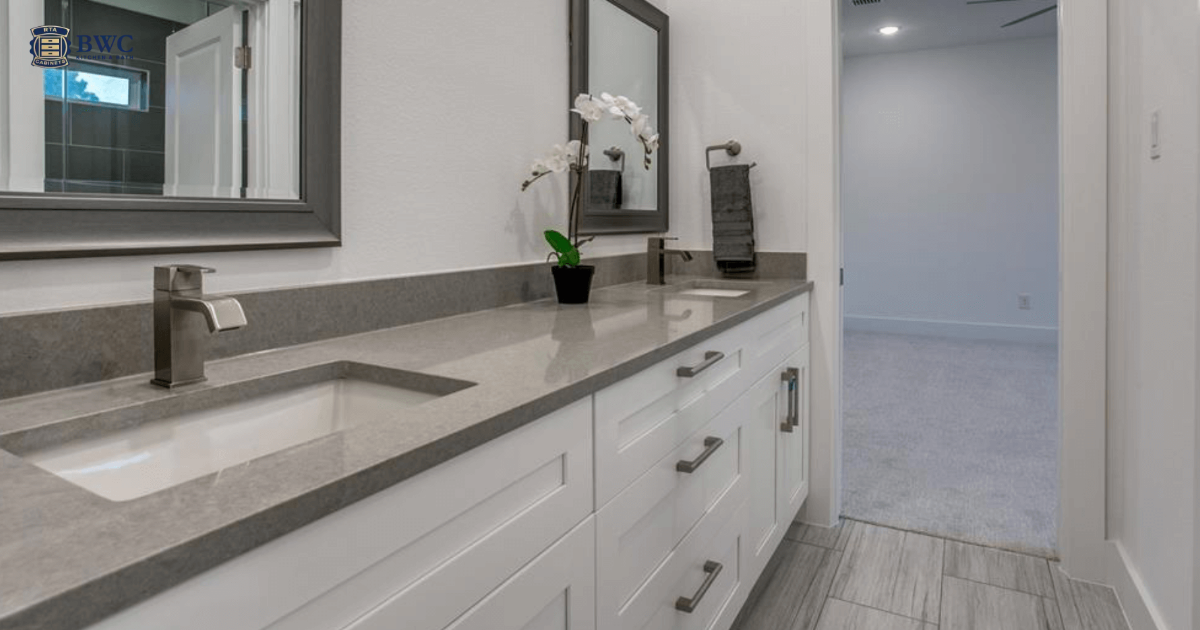Table of Contents
Are you thinking about giving your bathroom a unique makeover? Reusing kitchen cabinets for bathroom purposes, particularly as vanities, is becoming increasingly popular among DIY enthusiasts and home remodelers. Before making a purchase, consider some essential distinctions between kitchen and bathroom cabinetry, even though this may seem like an inventive way to save money or add personality to your space.
This blog explores whether you can repurpose kitchen cabinets as bathroom cabinets, how to select the best type, and any necessary modifications that may be necessary. Everything you need to know to decide if this design option is appropriate for your house will be covered, from water resistance and structural support to stylistic compatibility.
Key Differences Between Kitchen Cabinets and Bathroom Vanities
Bathroom vanities and kitchen cabinets differ slightly in terms of style and design. These distinctions are important for longevity and practicality, even though they are typically not immediately noticeable. The majority of these differences relate to plumbing size and accessibility:
- Sizing: Kitchen cabinets tend to be larger than bathroom cabinets. The bathroom cabinets are 21 inches deep, whereas the kitchen cabinets are 24 inches deep. While bathroom cabinets’ reduced capacity allows for greater floor space in smaller spaces, kitchen cabinets’ additional space allows for a larger counter space and work surface. Also, kitchen cabinets are typically 34.5 inches high, and bathroom cabinets are 31.5 inches tall.
- Accessibility of Plumbing: Standard kitchen cabinets typically don’t have cutouts or room for the plumbing supplies that bathrooms need, except for the cabinets that hold the kitchen sink. However, bathroom cabinets do provide space for these necessities.
Quick Comparison: Kitchen vs Bathroom Cabinets
| Feature | Kitchen Cabinets | Bathroom Cabinets | Key Difference |
| Depth & Height | 24″ deep, ~34.5″ high | 21″ deep, ~31.5″ high | Kitchen cabinets are larger and deeper |
| Moisture Exposure | Lower humidity | Constant moisture | Bathroom vanities need water-resistant finishes |
| Plumbing Space | Limited, except sink base | Built-in plumbing cutouts | Bathroom designs allow plumbing clearance |
| Material Needs | Wood, MDF, or plywood | Waterproof or sealed surfaces | Bathrooms require extra sealing and ventilation |
Which Types of Kitchen Cabinets Work Best in Bathrooms?
As not all kitchen cabinets are equal, it’s essential to consider which types might be most suitable for bathrooms.
- Solid Wood Cabinets
These are the strongest and most durable. Oak, maple, or cherry are excellent hardwood choices; they are exceptional when properly sealed to avoid warping or swelling in humid conditions.
- Plywood Cabinets
Particleboard or MDF cabinets are less stable than high-quality plywood cabinets in regions with high moisture levels. However, they provide strong structural support and are common in custom or semi-custom cabinetry.
- Thermofoil Cabinets
These cabinets are made of MDF and have a layer of vinyl applied. Thermofoil can rip if exposed to steam or water damage, despite having a decent degree of moisture resistance. It works best in bathrooms with low moisture content and sufficient ventilation.
- Laminate Cabinets
Cabinets with laminate fronts are stain- and moisture-resistant, which makes them easy to clean. To stop water from seeping into the core material, you must properly seal the edges.
- European-style Frameless Cabinets
These sleek and modern cabinets provide easier access to storage space because they don’t have a face frame. They look fantastic in bathrooms, especially when paired with durable materials like plywood or high-pressure laminate.
- Shaker-Style Cabinets
Shaker cabinets are popular in bathrooms and kitchens due to their timeless appearance. They are a great multipurpose option when made of moisture-resistant materials like solid wood or plywood.
Pro tip: To prolong the life of kitchen cabinets used in bathrooms, always paint or seal them with a water-resistant paint or sealant, and ensure your bathroom has sufficient ventilation.
Can You Use a Kitchen Cabinet as a Bathroom Vanity?
There are a few essential things to keep in mind when using a kitchen cabinet as a bathroom vanity. Kitchen cabinets are usually larger and deeper than bathroom vanities; you must adjust them to fit correctly.
Since kitchen cabinets may not be able to withstand the high humidity levels typically found in bathrooms, waterproofing solutions may also be necessary. Despite these challenges, using them could offer flexible and reasonably priced options for your bathroom project.
How to Use Kitchen Cabinets in Your Bathroom
Now that you know you can use kitchen cabinets in your bathroom, how do you actually go about using them? Just follow the guide below:
Step 1: Choose the Right Material
Choose solid wood or wood with a high-quality finish to withstand moisture and maintain its appearance. Making this decision is essential to extending their lifespan and avoiding water damage. Consider materials specifically designed for high-humidity environments.
Step 2: Adjust the Size
Instead of the usual 24 inches, lower the kitchen depth to a more appropriate 18 to 21 inches. As necessary, adjust it to the standard cabinet height for user comfort. Adjusting the measurements will help maximize the space in the bathroom.
Step 3: Make Plumbing Adjustments
Make the required cuts to fit your sink’s plumbing style. Ensure the cuts are precise and do not compromise the structure. To reinforce any weak areas, apply wood glue. Plumbing fixtures can be integrated without sacrificing their integrity thanks to this step.
Step 4: Select the Right Hardware
Select hardware that complements classic finishes and sparkling showers commonly found in bathrooms. Additional gear, such as dark hardware, can give the design a more contemporary feel. The appropriate choice improves both use and aesthetic appeal.
Step 5: Lock the Cabinet Appropriately
Use the right nails, such as 18-gauge finishing nails, 1.5 inches long, for a secure installation. Know the average heights and provide ample support; secure it to the bathroom wall to prevent it from falling over. These aspects make the cabinets stable, which is necessary for them to perform safely and reliably over time.
Common Mistakes to Avoid When Using Kitchen Cabinets in Bathrooms
Many things can go wrong when individuals opt for kitchen cabinets in restrooms. The majority of problems stem from taking shortcuts or neglecting minor but essential details.
Ignoring Moisture Resistance
Bathrooms stay damp for longer than kitchens, and that constant moisture quietly eats into joints and edges. A quick coat of paint isn’t enough. Every cut surface needs proper sealing, and the room needs steady airflow. Ventilation is the real defense, not just a glossy finish.
Choosing the Wrong Material
Some kitchen cabinets appear solid but conceal soft-core boards that expand when exposed to humidity. Before buying, check what’s underneath the surface. Plywood or well-sealed hardwood lasts far longer than MDF in a steamy space.
Neglecting Plumbing Adjustments
Sink pipes rarely line up neatly with existing cabinet backs. If you skip the planning, you will end up forcing the fit or cutting too much later. Measure twice, mark clearly, and reseal any new openings to prevent steam from finding a way in.
Underestimating Space Requirements
Kitchen cabinets are bulkier by design. Without adjusting the trimming depth or height, you will lose valuable floor area. Always mock up the fit before installation; it saves a lot of regret once you complete the plumbing and tile work.
Conclusion
When you select the correct cabinet material, make the necessary adjustments, and complete the plumbing and sealing, it is possible to transform a kitchen cabinet into a modern and elegant bathroom cabinet. If carefully designed and built with proper moisture protection in mind, they can provide a long-lasting, visually appealing solution.
FAQs
How do you convert a kitchen cabinet into a bathroom cabinet?
You can convert a kitchen cabinet into a bathroom cabinet with some interior reinforcement and plumbing cutouts, along with a modified back panel. Select a sink and countertop that suit your cabinet size, and apply either wood or waterproof sealant to the entire area for added protection.
Are kitchen cabinets water-resistant enough for bathrooms?
Standard kitchen cabinets are not thoroughly water-resistant, so most of them are potentially prone to bathroom moisture. They can get tougher, though, if they use the proper finishes, such as sealants, waterproof paint, or laminate coatings.
What modifications are needed to make kitchen cabinets work in a bathroom?
To raise the cabinet height, use a section that you will cut out from the back panel, and drill plumbing holes. Use a water-repellent coat, and use moisture-resistant materials.
Can kitchen base cabinets support a bathroom sink?
Since these items are structurally sound, most kitchen base cabinets can accommodate a bathroom sink. However, do check the material of the cabinet, and, if necessary, reinforce the top, especially if you install a heavy sink, such as a stone or porcelain sink.
Will kitchen cabinets withstand the moisture and humidity of a bathroom?
If you prepare them correctly, cabinets in your kitchen or bathroom can withstand the moisture found in these areas. Ensuring the bathroom has sufficient space to accommodate a backsplash and extractor. Use plywood instead of particleboard and seal every surface.
